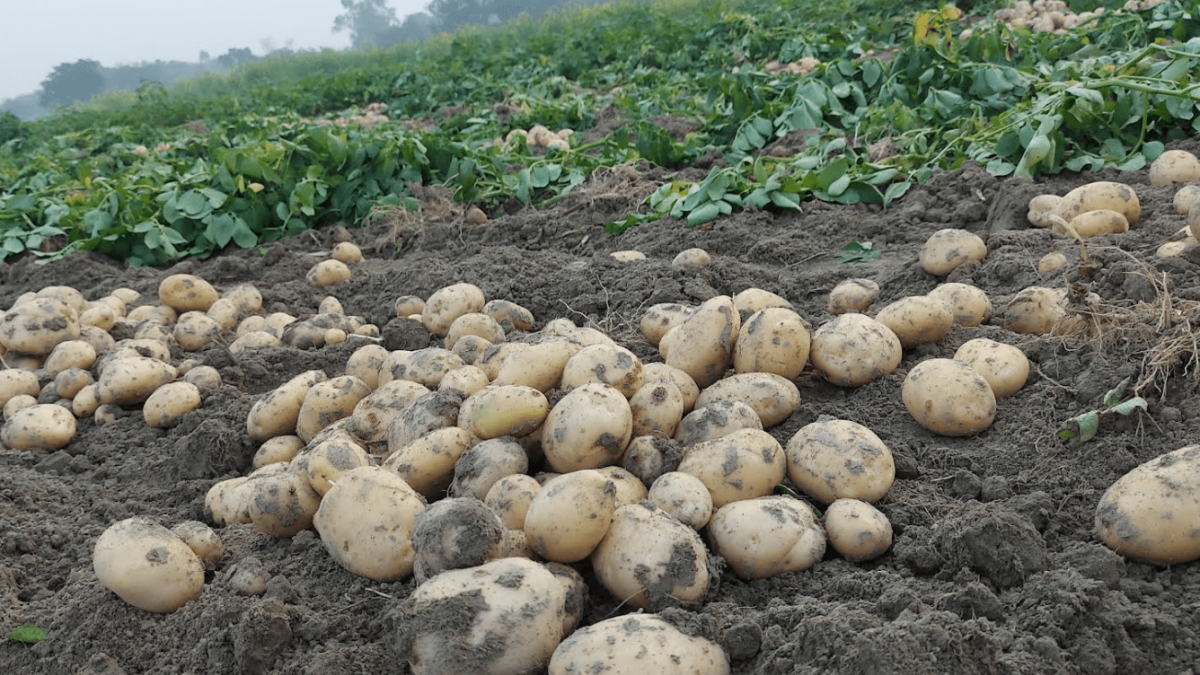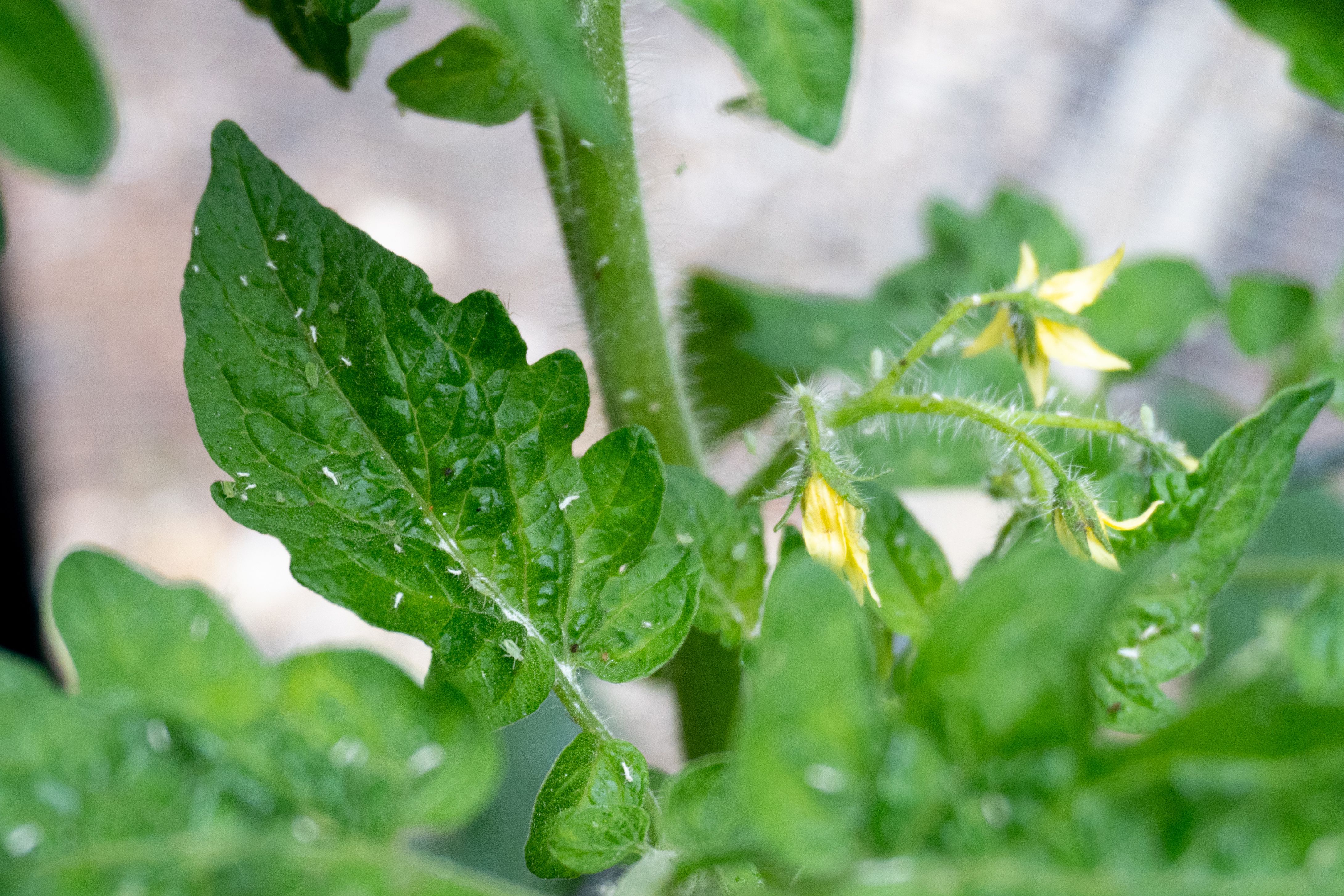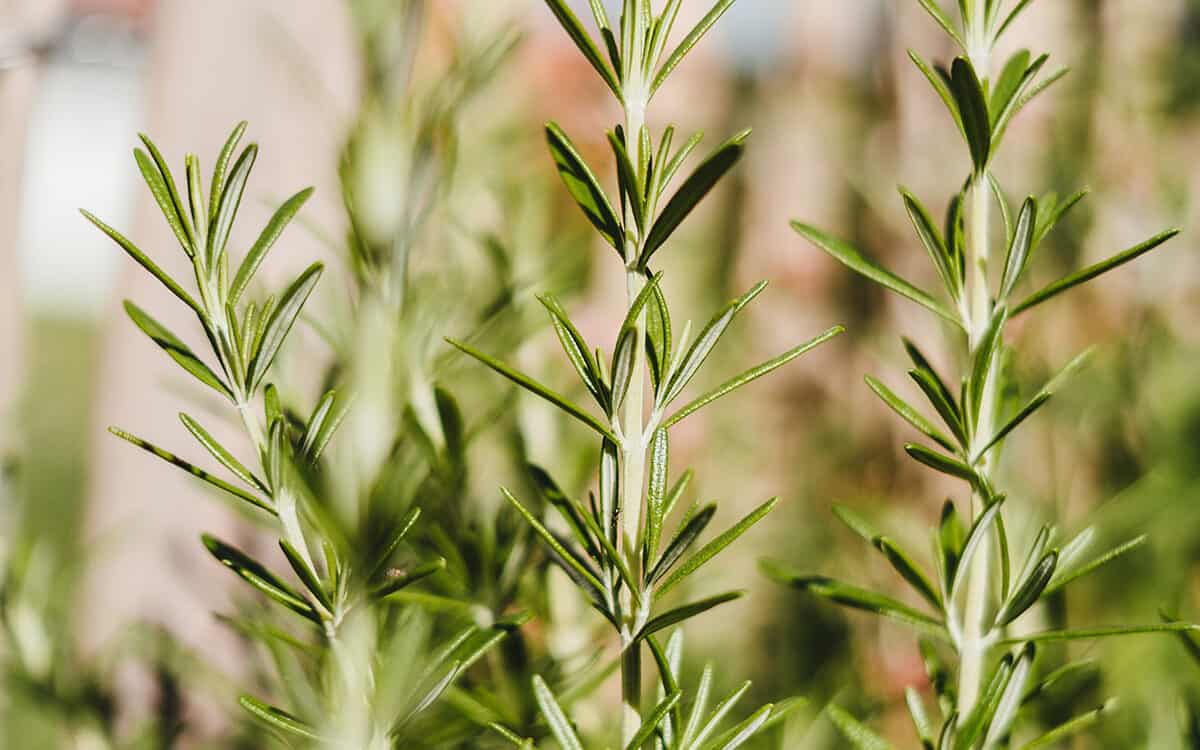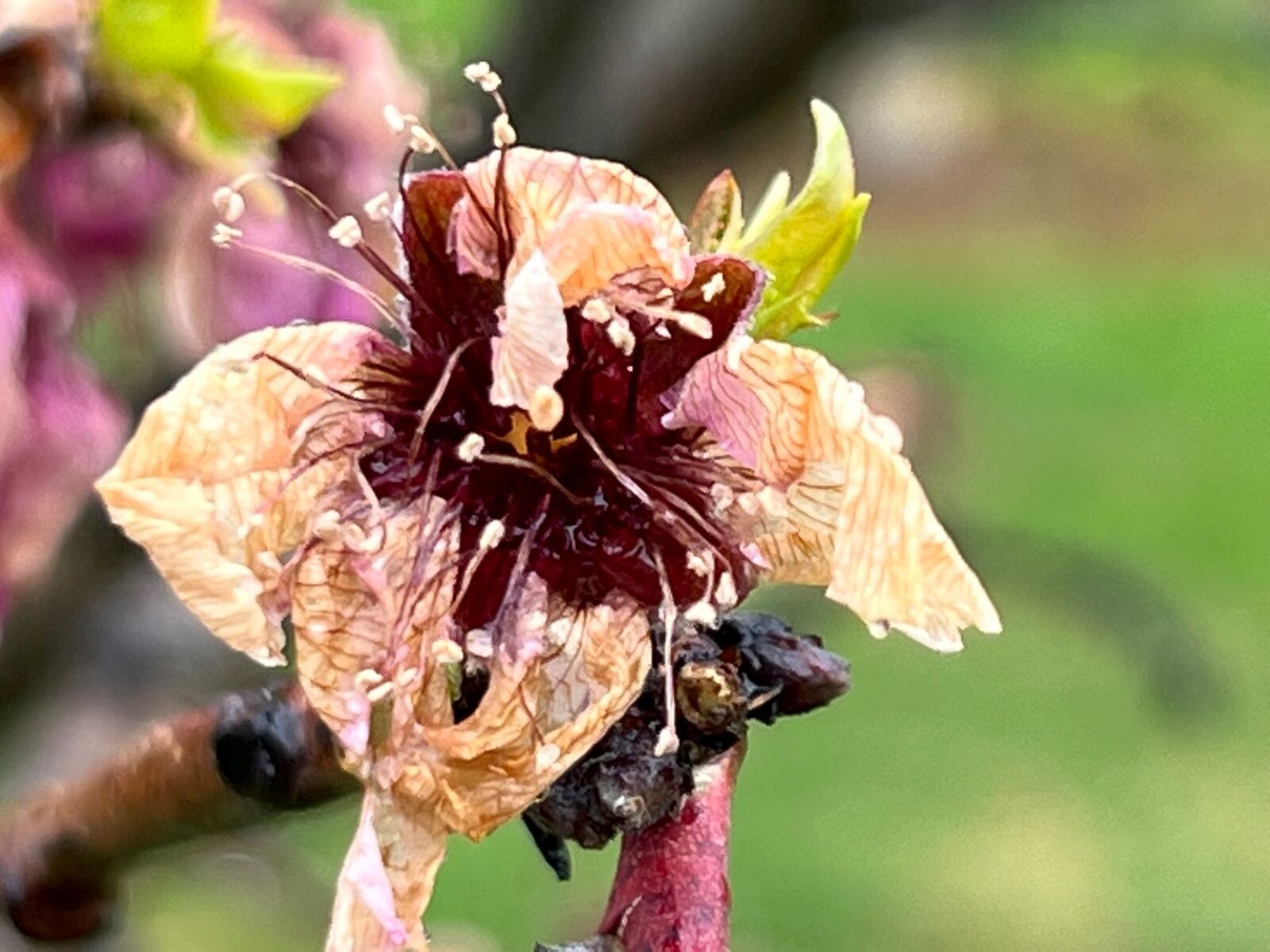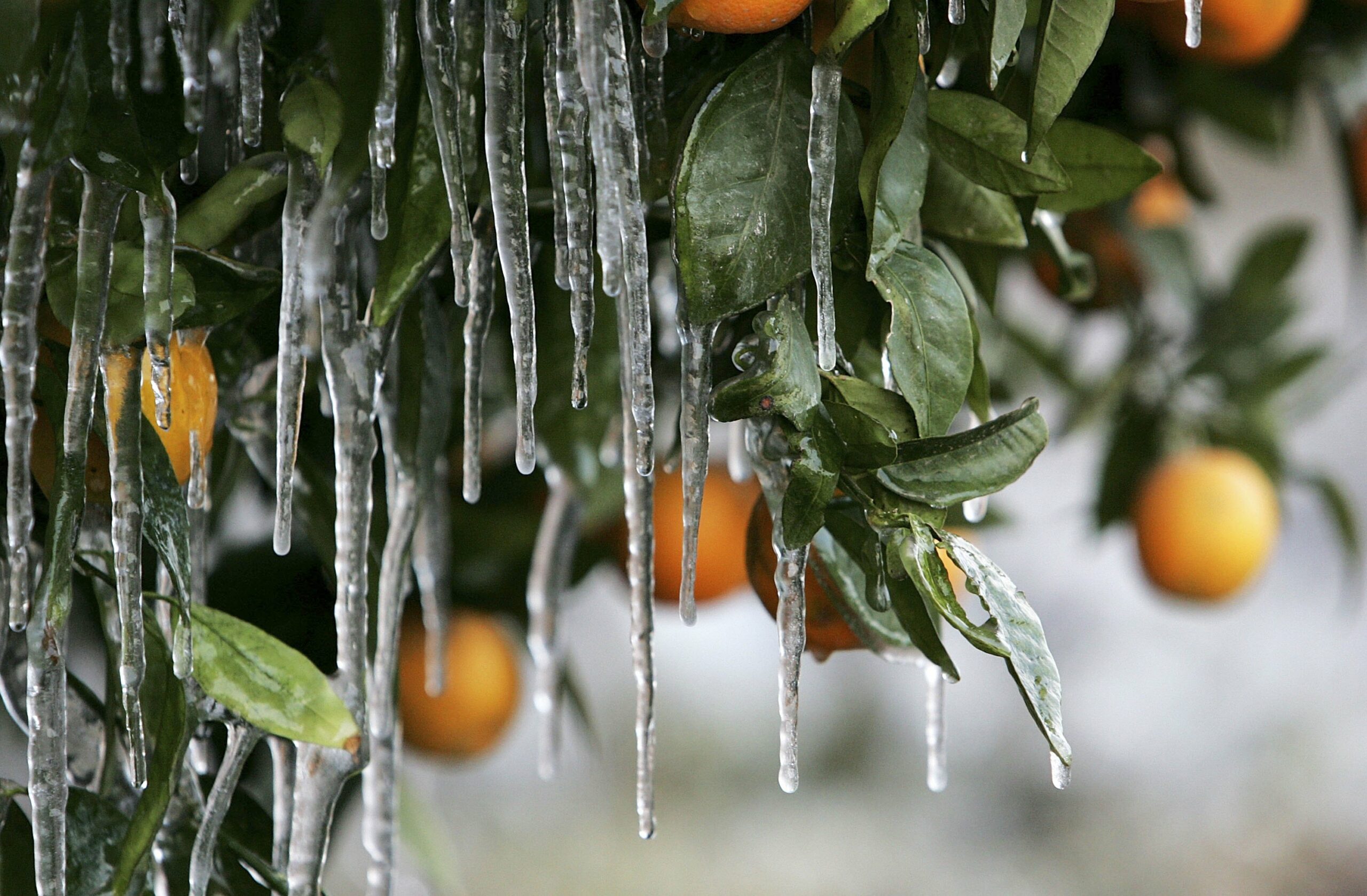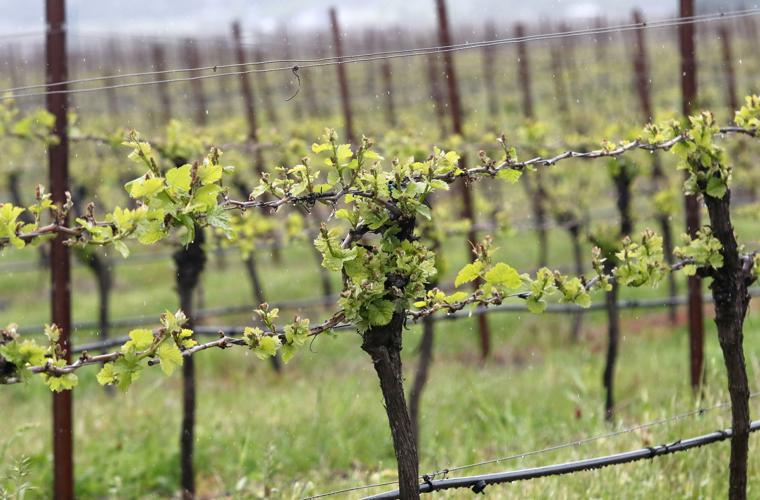Potato farming represents a cornerstone of global agriculture, with the humble tuber serving as a staple food source for hundreds of millions of people around the world. As one of the most widely grown and consumed crops, its agricultural significance is underscored by its ranking as the world’s fourth-largest food crop following maize, wheat, and rice. The global potato industry not only supports the livelihood of farmers but also plays a pivotal role in food security, nutrition, and as an economic commodity.
However, the production of potatoes is beset by various challenges, among which the prevalence of diseases stands as a substantial threat that can lead to severe yield losses and quality degradation. Diseases in potato farming are caused by a range of pathogens, including fungi, bacteria, viruses, and nematodes. Some of the most destructive diseases that affect potatoes include late blight (caused by Phytophthora infestans), early blight (Alternaria solani), blackleg and soft rot (Pectobacterium and Dickeya spp.), and viral diseases such as Potato virus Y (PVY) and Potato leafroll virus (PLRV). These pathogens can be insidious, often proliferating under specific environmental conditions and remaining undetected until they have caused significant damage.
The consequences of uncontrolled potato diseases are far-reaching. Late blight alone, most notoriously known for causing the Irish Potato Famine in the mid-19th century, can still lead to complete crop failure under conducive conditions. Early detection and control are crucial to prevent the spread of these diseases. If left unchecked, farmers not only face economic losses but also the loss of food supply for the consumer market, affecting food prices and availability. Moreover, disease outbreaks can lead to the overuse of chemical pesticides, which carry their own environmental and health risks.
In the face of these persistent agricultural threats, the introduction of advanced disease detection methods is emerging as a critical innovation for managing potato health. These novel approaches are geared towards enabling early, accurate, and efficient identification of diseases, which is essential for implementing timely and targeted interventions. Cutting-edge technologies, particularly in the domain of artificial intelligence (AI) and machine learning, are revolutionizing the way we detect and manage crop diseases. Deep learning methods, a subset of machine learning, are proving particularly promising due to their ability to learn from vast amounts of data and recognize complex patterns, such as those found in diseased plant tissues.
This technological evolution is not a luxury but a necessity for the modern potato farmer who must navigate the challenges of climate change, evolving pathogen strains, and increasing demand for sustainable farming practices. As such, understanding the latest advancements in disease detection technologies is vital for anyone involved in the potato industry – from the farmers in the fields to the researchers in the labs and the consultants advising on crop management strategies.
The exploration of these technologies is essential to appreciate the leaps we have made from relying on manual inspections and rudimentary tools to embracing sophisticated algorithms that can ‘see’ and ‘learn’ from the environment. By analyzing patterns in plant growth, discoloration, and texture that might escape the human eye, these systems offer the promise of bringing potato farming into a new era of precision agriculture, where every plant can be monitored and every disease managed with an unprecedented level of detail and accuracy.
Traditional Disease Detection Methods
In the realm of potato farming, the scourge of plant diseases has long compelled farmers and agricultural consultants to remain vigilant, employing various strategies to identify the presence of pathogens that threaten their crops. Traditional disease detection methods have relied heavily on human intervention, with visual inspection and laboratory testing being the two primary tactics utilized in this ongoing battle against crop diseases.
Visual inspection remains one of the most common methods for disease detection. Farmers walk through fields, meticulously examining plants for signs of disease, such as spots on leaves, wilting, discoloration, or growth abnormalities. This method is grounded in the experience and knowledge of the farmer or agronomist, who must be able to distinguish between diseases based on their visible symptoms. For instance, the early symptoms of late blight include small, dark spots on leaves, which rapidly expand under wet conditions. Early blight, on the other hand, is characterized by concentric rings on the leaves, resembling a bull’s-eye.
Despite its ubiquity, visual inspection is fraught with challenges. It is exceptionally time-consuming, requiring frequent and thorough scouting of fields to catch diseases before they can spread. Due to the labor-intensive nature of this method, it’s not feasible for farmers managing large acreages without a substantial workforce. Moreover, visual inspection is inherently subjective. Symptoms of different diseases can often be similar or can be confused with damage caused by pests, nutrient deficiencies, or abiotic stresses such as drought or frost. This uncertainty can lead to misdiagnosis, which in turn might result in applying inappropriate treatments that fail to address the actual disease or, worse, exacerbate the problem.
Laboratory testing has served as a supplementary technique to visual inspection, providing a more scientific approach to disease detection. Samples of affected plant tissues are sent to a laboratory where various tests can be conducted to identify pathogens. These may include culturing the organism on a medium, molecular techniques such as polymerase chain reaction (PCR) to detect pathogen DNA, or serological assays like ELISA that identify pathogen-specific proteins. Although laboratory testing is more accurate than visual inspection, it also comes with notable drawbacks. It is generally more expensive and time-consuming, as the process of preparing and analyzing samples can take several days or even weeks, delaying the diagnosis and the potential response to the disease.
Time is a critical factor in disease management; the time lag in laboratory testing can lead to the pathogen spreading uncontrolled across the farm, causing extensive damage. Additionally, the process can be prohibitively costly for small-scale farmers or those in developing countries where access to such facilities is limited. Thus, laboratory testing has often been reserved for cases where the disease is unknown or has already reached an advanced stage, where visual inspection is no longer sufficient for an accurate diagnosis.
Moreover, both visual inspection and laboratory testing require skilled personnel who understand the complexities of plant pathology. Skilled agronomists or pathologists may not always be available, especially in remote or under-resourced areas. The scarcity of such expertise further amplifies the risks of human error in disease detection and makes the system less resilient to the challenges imposed by new or evolving pathogens.
Additionally, traditional methods often fail to account for the subclinical infections, where pathogens are present but symptoms are not yet visible. This asymptomatic phase can be crucial for disease control, as interventions at this stage can prevent or at least mitigate an outbreak. Yet, without clear visual indicators, such measures are seldom taken in time, highlighting the limitations of relying solely on human perception for disease detection.
The reliance on these conventional strategies, while having served well in the past, underscores the demand for more advanced, precise, and rapid disease detection technologies. Not only must new methods address the shortcomings of time, cost, labor, and expertise, but they must also provide solutions that are scalable to large operations and adaptable to various environmental conditions. It is within this context that the latest advancements in disease detection, particularly the adoption of deep learning, offer a tantalizing glimpse into the future of potato farming. These advanced technologies promise to transcend the limitations of traditional methods, allowing for swift, unbiased, and accurate disease detection that could revolutionize the way potato health is managed across the globe.
Emerging Technologies in Disease Detection
As the agriculture industry seeks more efficient and reliable means to safeguard crops from disease, deep learning has emerged as a transformative technology with significant promise. Deep learning, a subset of machine learning, mimics the workings of the human brain in processing data and creating patterns for use in decision making. It’s defined by its ability to learn, in an unsupervised manner, from large amounts of unstructured data. In the context of agriculture, and potato farming in particular, deep learning is increasingly applied to enhance the precision and effectiveness of disease detection.
The reasons behind the promise of deep learning for agricultural applications are manifold. Unlike traditional methods which often require manual interpretation of data, deep learning systems can process vast and complex datasets quickly and with remarkable accuracy. This is particularly useful in potato farming, where the early and accurate detection of diseases such as blight can mean the difference between a successful harvest and a devastating loss.
The most common architecture of deep learning that has been found to be particularly effective in image recognition tasks is the Convolutional Neural Network (CNN). CNNs are inspired by the organization of the animal visual cortex and are specifically designed to automatically and adaptively learn spatial hierarchies of features from visual input. Such networks are adept at managing two-dimensional data, such as images, and extracting patterns that are too subtle or complex for the human eye to discern.
CNNs consist of multiple layers of neurons that process input images and extract a hierarchy of high-level features. These features become progressively more abstract at each subsequent layer. A typical CNN architecture comprises convolutional layers, pooling layers, and fully connected layers. Convolutional layers apply a set of filters to the input image to create feature maps, which highlight regions of the image that are relevant to detecting patterns. Pooling layers then downsample these feature maps to reduce dimensionality and computational load, while preserving the most essential information. Finally, fully connected layers interpret these feature maps and output a prediction, such as the presence or absence of a particular plant disease.
For potato farmers, the implications of CNNs are profound. A trained CNN can scan images of potato leaves, capturing data that ranges from overt signs of disease to subtle variations in color, shape, and texture. These nuanced data points might be missed by the human eye or be indiscernible through conventional disease detection methods. Moreover, the process of disease identification via CNN does not just stop at the categorization of disease; it can also localize the affected areas within the plant’s imagery. This precise identification and localization are crucial for targeted treatment, which can conserve resources and minimize chemical use in crop management.
The strength of CNNs in pattern recognition has been harnessed in numerous applications, from medical diagnostics to security surveillance, and is now increasingly applied to precision agriculture. By training CNNs on large datasets of potato crop images, including those exhibiting various disease symptoms, it becomes possible to detect and classify diseases with a level of consistency and speed unattainable by human labor alone.
For instance, through machine learning techniques, CNNs can differentiate between the lesions caused by early blight and the discoloration resulting from late blight, or even distinguish these diseases from other stress factors such as nutrient deficiencies or water stress. They can do so under different lighting conditions and stages of disease progression, which is especially important as symptoms can manifest differently depending on the environment and crop variety.
The real-world applicability of deep learning and CNNs in potato farming is further amplified by their integration with other emerging technologies. For example, unmanned aerial vehicles (UAVs), commonly known as drones, can be equipped with high-resolution cameras to capture imagery over vast farmlands, feeding data into CNNs for analysis. Similarly, smartphones, which are now ubiquitous, can become powerful tools for disease detection; with the appropriate applications, farmers can snap pictures of their crops and receive immediate diagnostic feedback powered by deep learning algorithms.
As deep learning continues to evolve, the agricultural sector stands to benefit immensely from its integration into everyday farming practices. For potato farmers, the early and accurate detection of diseases facilitated by CNNs not only protects their livelihood but also enhances their ability to meet the growing food demands of a burgeoning global population. The sophistication and adaptability of CNNs make them an invaluable ally in the fight against crop disease, marking a significant leap from traditional, labor-intensive methods to a future of data-driven precision agriculture.
Deep Learning Methods for Potato Disease Detection
Building upon the theoretical framework of Convolutional Neural Networks (CNNs) and their potential in the agricultural sector, particularly for potato disease detection, it is important to understand how these deep learning models are developed and trained to pinpoint various diseases with accuracy and efficiency.
Training a CNN involves several steps that must be meticulously followed to ensure that the network can correctly learn from the data provided. First and foremost, the gathering of a robust dataset is critical. This dataset should include a large number of images representing a variety of potato diseases, as well as healthy plants for comparison. These images must be of high quality and clearly show the symptoms of the disease, such as color changes, spots, or lesions on the leaves or tubers.
To assemble a comprehensive dataset, it is often necessary to source images from different locations, times of day, and under varied weather conditions to make the CNN adaptable to real-world scenarios. Once collected, these images are annotated, a process where disease features are labeled so the CNN can learn what to look for when analyzing new images. The labeling must be done by experts in the field to ensure accuracy, which in turn improves the model’s learning outcomes.
After the dataset is prepared, the CNN’s training phase begins. This involves feeding the images into the CNN, which allows the model to adjust its internal parameters through a process called backpropagation. As the name suggests, backpropagation refers to the mechanism the network uses to correct its errors. When the CNN makes a prediction that differs from the annotated label, the error is calculated and the information is sent back through the network, adjusting the weights and biases of the neurons. This iterative process continues over many cycles, each time refining the CNN’s ability to recognize and interpret the disease indicators present in the images.
An essential part of training a CNN is the division of the dataset into subsets for training, validation, and testing. The training set is used to teach the model, the validation set to tune the hyperparameters and prevent overfitting, and the test set to evaluate the CNN’s performance on unseen data. Overfitting occurs when a model becomes too aligned with the training data, including noise and outliers, which can compromise its ability to generalize to new data.
During training, CNNs not only become adept at identifying the presence of a disease but also its type and severity. This is achieved by applying a combination of pattern recognition and regression analysis. Pattern recognition allows the network to categorize diseases by matching input images to known disease profiles, while regression analysis aids in assessing the severity based on the extent and characteristics of the visible symptoms.
The types of diseases that a CNN might learn to identify in potatoes include early blight, late blight, and various viral infections such as potato leafroll virus and potato virus Y. For example, early blight and late blight, despite having similar sounding names, present different visual cues. Early blight causes small brown lesions with concentric rings, whereas late blight leads to larger, irregular-shaped lesions that are often accompanied by a white fungal growth at the undersides of the leaves. By training on diverse images depicting these diseases, CNNs can learn to distinguish between them based on these subtle differences.
Moreover, as diseases progress, the characteristics of the affected areas change. A CNN trained on a temporally diverse dataset can learn to recognize the stages of disease progression. This is particularly important for providing actionable insights to farmers. Knowing the stage of disease helps in determining the appropriate intervention measures, which can range from targeted application of fungicides in the early stages to more drastic actions like crop quarantine or destruction in advanced stages.
To further enhance the CNN’s performance, advanced techniques such as data augmentation are used. Data augmentation involves artificially expanding the training dataset by altering the images in various ways, such as cropping, rotating, zooming, or changing the color balance. This process helps the CNN to become more robust to variations in the real-world environment, such as changes in lighting or background, and prevents it from learning irrelevant patterns.
The success of a CNN in disease detection also hinges on its architectural nuances. Residual networks (ResNets) or networks with inception modules, for instance, allow for deeper networks without the degradation problem—where additional layers can lead to higher training error. These architectures enable the CNNs to learn more complex representations and, hence, more accurately identify various disease states.
Once a CNN is fully trained, it is deployed in the field where it can analyze images from a variety of sources, such as drones, mobile devices, or stationary cameras. The CNN processes these images and provides a diagnosis of the health of the potato plants. It can categorize the health status as disease-free, or identify the specific disease and its severity, all in real-time or near-real-time, offering a critical advantage over traditional diagnostic methods.
The combination of technical rigor in the training process, the complexity of the CNN architecture, and the quality and diversity of the dataset culminates in a powerful tool for potato disease detection. With these elements in place, deep learning models such as CNNs are equipped to significantly enhance the precision and efficiency of disease identification in potato crops, signaling a major advance in agricultural technology.
Case Studies: Deep Learning in Action
The utilization of CNNs in real-world scenarios for potato disease detection has led to several success stories that underscore their effectiveness, efficiency, and scalability. By delving into a few case studies, we can gain insights into how these advanced technological methods are being applied and the kind of impact they are having on potato farming.
Case Study 1: Potato Crop Disease App (PCD app)
A notable example is the development of the Potato Crop Diseases (PCD) mobile app. This application is free for farmers and was created with the objective of facilitating early detection of potato crop diseases. Leveraging CNNs, the app enables farmers to capture images of their crops using basic mobile devices, after which the images are processed to identify potential disease symptoms. In a field trial, the PCD app demonstrated an accuracy level that inspired confidence among farmers, with real-time feedback enabling them to take immediate action.
This app has not only proven to be an efficient way to detect diseases without the need for expert intervention, but it also demonstrates the scalability of CNNs, as the app can be easily disseminated and used across different regions. Importantly, the cost-effectiveness of this solution stands out, as it eliminates the need for costly manual surveys of potato fields by specialists.
Case Study 2: Croptic’s AI for Weed and Disease Mapping
Another case study involves Croptic’s application of AI and CNNs to potato farming. Croptic’s technology uses drones equipped with advanced sensors to capture high-resolution images of potato fields, which are then analyzed using CNNs. These networks are adept at identifying signs of diseases and pest infestations, such as the Colorado beetle. The technology was reported to have the potential for significant cost savings, with the added advantage of being environmentally friendly due to the possibility of more precise application of pesticides.
The scalable nature of Croptic’s system is evident in its capacity to cover large areas quickly and effectively, reducing the time and labor required for field inspections. Moreover, the drone-based imagery coupled with CNN analysis allows for the development of highly detailed maps that guide farmers in targeted interventions, thereby reducing waste and improving overall crop management.
Case Study 3: Vultus’s Disease Detection Service
Precision farming has been taken to new heights with the introduction of Vultus’s early disease detection service tailored specifically for potato crops. By providing farmers with remote sensing tools and analytics, Vultus’s platform is designed to detect early signs of disease before they become visible to the naked eye. Their approach combines multispectral imagery with CNNs to analyze and interpret data points indicative of disease.
Farmers who used Vultus’s service were able to detect potential outbreaks of disease with greater accuracy, allowing them to act swiftly to mitigate the spread. The technology is scalable across different farm sizes and can be integrated into existing farm management systems, showcasing how CNNs can be seamlessly incorporated into modern agricultural practices.
Case Study 4: Automatic Blight Disease Detection
A notable study proposed the ResNet-9 model, focusing on the detection of blight disease in potato and tomato leaf images. This model demonstrated a high level of accuracy in identifying both early and late stages of blight. The accessible nature of the model, combined with the ease of use for farmers, allows for quick detection and decision-making. This case study shows the effectiveness of a CNN model in accurately diagnosing diseases, which could potentially be adapted for use with other crops, indicating the versatility and scalability of the technology.
Case Study 5: AI Framework for Potato Plant Disease Detection
An artificial intelligence framework developed using deep learning techniques for the categorization and detection of potato plant leaf diseases represents another leap forward in disease management. This framework, which was tested on the comprehensive Plant Village dataset, employed various CNN architectures to discern and classify multiple diseases with remarkable precision. Its efficiency was not limited to a laboratory setting but extended to field conditions, affirming the model’s robustness and real-world applicability.
The scalability of this AI framework is particularly impressive, considering its capability to analyze images from diverse sources, adjusting to different light conditions and disease manifestations. As such, it holds promise for widespread adoption among potato farmers looking to integrate AI-driven tools into their disease detection and prevention strategies.
Through these case studies, the promise of CNNs and deep learning technologies in practical agricultural settings is clearly evident. Their application has shown not only an increase in disease detection accuracy but also enhanced efficiency in terms of the resources and time required for disease management. Furthermore, the examples illustrate that such technologies can be scaled to various extents, be it through a mobile app or comprehensive remote sensing platforms, making these advanced methods accessible to a wide range of farming operations. As these technologies continue to develop and are adopted more broadly, they are poised to revolutionize the way potato diseases are detected and managed, leading to more sustainable and productive agriculture practices.
Impact of Deep Learning on the Potato Industry
The transformative influence of deep learning on the potato industry is multi-faceted, encompassing economic, environmental, and social dimensions that shape the sustainability and profitability of this critical sector. As illustrated by the preceding case studies, the employment of CNNs and other AI-driven tools has inaugurated a new era in disease detection and crop management, with profound implications for farmers, consumers, and the broader agricultural landscape.
Economic Impact
Economically, the most immediate effect of deep learning applications in potato disease detection is the potential for increased yield. Accurate and timely identification of diseases such as potato blight or bacterial wilt enables farmers to apply targeted interventions, preventing the spread of pathogens and safeguarding the harvest. Increased yield translates into more stable income for farmers and helps to stabilize market prices for potatoes, a staple food for billions of people worldwide.
Deep learning tools also contribute to a significant reduction in operational costs. Traditional scouting methods, which require extensive labor and time to physically inspect crops, can be supplensively augmented or replaced by AI-powered systems. These systems streamline the disease detection process and minimize the need for manual intervention. As labor costs represent a substantial portion of production expenses, the savings accrued through automation can make potato farming more economically viable, particularly for smallholder farmers who might otherwise struggle with the financial demands of extensive manual monitoring.
Moreover, this technology-driven approach enables more precise use of resources, notably pesticides and fungicides. Instead of blanket applications that are both costly and often excessive, farmers can apply treatments locally and only as needed, reducing overall chemical use. Not only does this decrease the expenditure on agrochemicals, but it also mitigates the risk of developing resistance in pests and diseases, which could have severe long-term economic repercussions.
Environmental Impact
The environmental benefits of utilizing deep learning for disease management in potato farming are closely linked with the economic advantages. Precision agriculture, which is greatly enhanced by AI and deep learning technologies, promotes a more sustainable use of resources. The minimized use of chemical treatments preserves soil health and prevents contamination of water sources, reducing the ecological footprint of potato farming.
Furthermore, by maintaining healthier crops and avoiding the need for replanting, deep learning technologies help optimize the use of land. With land being a finite resource, any measure that can maintain or increase yield without the need for expansion into natural habitats is of significant environmental value. It also indirectly contributes to combating deforestation and biodiversity loss, as there is less incentive to convert wild areas into additional agricultural lands.
AI-driven pest and disease detection systems, which can analyze vast amounts of data from weather patterns to plant imagery, are also likely to enhance climate resilience in potato farming. The ability to predict and respond to disease outbreaks that may be climate-related ensures that farming practices can adapt to changing environmental conditions. This not only secures the livelihoods of farmers but also contributes to broader efforts against climate change by promoting agricultural resilience.
Social Impact
On a social level, the integration of deep learning tools in potato farming holds the promise of fostering rural development. With agriculture being a primary source of employment in many developing countries, improvements in agricultural practices have a direct positive effect on rural communities. Advanced technologies that increase yield and profitability can help to elevate the standard of living for farming families, potentially reducing rural poverty and its associated issues such as malnutrition and lack of education.
Additionally, there is a profound educational element involved in the deployment of deep learning technologies. Farmers get exposed to cutting-edge methods in agronomy, engendering a skilled workforce that is conversant in both traditional farming techniques and modern technologies. By closing the digital divide, such exposure can empower farmers to become innovators in their own right, driving further advancements in sustainable agriculture.
However, while the positive effects are substantial, it is equally important to discuss the challenges and limitations that arise with the implementation of deep learning in potato farming, which we will delve into in the following section.
Challenges and Limitations
In contemplating the transformative potential of deep learning within the potato industry, we must also pivot to a candid examination of the barriers that have tempered its widespread adoption. These hurdles manifest in various forms such as financial constraints, a scarcity of technical know-how, privacy considerations, and cultural inertias. Each of these concerns requires thorough navigation to truly harness the power of AI in agriculture.
High Initial Costs
One of the most tangible barriers to the integration of deep learning systems in potato farming is the high initial investment required. Despite the long-term economic benefits, the upfront cost of sophisticated sensors, drones, computing infrastructure, and the software necessary to implement these technologies can be prohibitive, especially for small-scale farmers. Advanced devices and analytical tools that form the backbone of deep learning applications are often accompanied by a steep price tag, making them less accessible for those operating with limited financial resources.
The situation is exacerbated by the fact that the returns on investment, although potentially significant, are not immediate. The latency in reaping the financial benefits can deter farmers who are cautious about the risk of new technology investments, particularly in regions where credit facilities and agricultural subsidies might be lacking or insufficient to offset the initial expenditure.
Need for Technical Expertise
The sophistication of deep learning tools is a double-edged sword; while they offer cutting-edge solutions to age-old problems, they also demand a level of technical expertise that may not be readily available in the agricultural community. The operation of AI-based disease detection systems, interpretation of data outputs, and maintenance of the underlying technology all require specialized knowledge.
Training existing farm personnel or hiring new employees with the requisite technical skillset introduces an additional layer of cost and complexity. This aspect is particularly daunting in regions where the educational infrastructure does not sufficiently prioritize or support technical proficiency in digital technologies.
Data Privacy Concerns
Another significant impediment arises from concerns around data privacy. Deep learning systems function optimally when fed with vast quantities of data, which often includes sensitive information about farm operations. The apprehension over how this data might be stored, used, or potentially shared is not trivial, given the increasing global emphasis on data rights and privacy.
Agricultural data has immense value, not just for the individual farmer but also for seed companies, agrochemical businesses, and even financial institutions. As such, farmers may be reluctant to embrace systems that could expose their operational data to external parties, particularly without clear regulations and assurances on data use and ownership.
Resistance to New Technology Adoption
Lastly, the transition towards deep learning technologies in potato farming faces hurdles rooted in human psychology and cultural practices. For generations, farming communities have developed and adhered to methodologies that are tried and tested. Introducing AI-driven approaches often means disrupting established routines and traditional knowledge systems.
Resistance to such change can be both pragmatic, born of skepticism over new tools’ efficacy, and sentimental, tied to a preference for the familiarity of conventional methods. Farmers might also fear that reliance on technology could lead to a devaluation of their expertise, a sentiment that can be particularly pronounced among older generations who have spent decades honing their agrarian skills.
Bridging this psychological gap requires more than just demonstrating the capabilities of deep learning—it involves building trust in the technology, ensuring ease of use, and creating a clear narrative that complements rather than replaces traditional agricultural wisdom.
In summary, while the introduction of deep learning technologies presents an exciting frontier in disease detection for the potato industry, it also ushers in a complex set of challenges that need to be navigated. The interplay of cost, expertise, privacy, and cultural acceptance forms a crucible in which the potential of AI in agriculture will either be forged or falter. Addressing these barriers calls for a collaborative effort that combines technological innovation with economic strategies, educational initiatives, policy formulation, and sensitivity to the sociocultural fabric of the farming community.
As we move forward, anticipating future advancements and potential solutions to these challenges will be paramount. The next section will delve into the prospects lying on the horizon for deep learning in potato farming, contemplating how we can mitigate these barriers and explore the exciting potential that these technologies may hold for the agricultural sector at large.
Future Prospects of Deep Learning in Agriculture
As we cast our gaze towards the horizon of deep learning and its future in the agricultural realm, we find ourselves amidst an era of rapidly evolving technologies that hold promise for making potato farming smarter and increasingly autonomous. The nexus of deep learning, drone technology, Internet of Things (IoT) devices, and advancements in robotics converge to carve out an agriculture landscape that is not only more efficient but also resilient and data-driven.
Integration of Deep Learning with Drones and IoT Devices
The future of potato farming is one where drones soar above fields, outfitted with high-resolution cameras and sensors that capture a wealth of data. Deep learning algorithms, operating from this rich lode of aerial imagery, have the potential to discern subtle patterns indicative of disease outbreaks long before they become visible to the human eye. The use of drones extends the spatial reach and precision of monitoring, allowing for rapid, wide-scale detection that would be impractical and costly with ground-based surveillance alone.
Deep learning’s synergy with IoT devices further amplifies this paradigm shift. In the fields, networks of IoT sensors could constantly monitor a range of variables like soil moisture, nutrient levels, temperature, and more. This continuous stream of data, when processed through deep learning systems, could enable predictive analytics to take a forefront role in farming decision-making processes. Real-time insights on plant health and environmental conditions would facilitate proactive management of diseases, potentially leading to a substantial decrease in the use of chemical treatments.
Towards Autonomous Farming Systems
Looking forward, the integration of deep learning technologies with advanced robotics represents a frontier for autonomous farming systems. Imagine a fleet of autonomous tractors and rovers patrolling potato fields, equipped with vision systems trained via deep learning to recognize and respond to signs of disease. These intelligent machines could carry out tasks such as targeted application of pesticides or even precise removal of infected plants, reducing waste and minimizing the spread of pathogens.
The sophistication of machine learning models is set to grow, powered by increased computational capacity and more nuanced algorithms. Transfer learning, a method where a pre-trained model is fine-tuned to a specific task with minimal additional data, could dramatically expedite the training process for disease detection models, making it easier and faster to adapt to new diseases or strains.
Smart Data Management and Predictive Analytics
One of the most exciting prospects lies in the domain of data management and analytics. With the advent of blockchain technology, farmers may soon be able to securely and transparently share crop data. Coupled with smart contracts, this could lead to novel forms of cooperative disease management and resource sharing, revolutionizing the traditional frameworks of agricultural operations.
Predictive analytics, fueled by deep learning, could transform data into forecasts that not only predict disease outbreaks but also suggest optimal planting schedules, harvest times, and even market trends. This anticipatory approach would not just save crops but could also maximize profits and manage resources more effectively.
Challenges Ahead
As we dream of these advances, it is crucial to remain cognizant of the challenges ahead. Key among them is ensuring that these technologies remain accessible and beneficial to farmers of all scales. Bridging the digital divide, fostering technological literacy, and developing cost-effective solutions will be essential in democratizing the benefits of AI in agriculture.
Moreover, continued research and collaboration between technologists, agronomists, and farmers will be vital to address practical implementation concerns. Ethical considerations regarding data usage, privacy, and automation’s impact on labor must be thoughtfully navigated to cultivate a technological ecosystem that aligns with societal values.
Collaborative Endeavors and Education
The maturation of these technological prospects will likely rely heavily on collaborative endeavors. Public-private partnerships can play a pivotal role in funding research and development, while educational programs can prepare the next generation of farmers and agricultural technologists. This synergistic effort can accelerate the translation of research findings into practical, field-ready technologies.
As deep learning continues its trajectory into the agricultural sector, its potential to innovate and revolutionize the ways we detect and manage potato crop diseases is boundless. The convergence with drone technology, IoT devices, and robotics points towards a smarter, more autonomous, and data-empowered future for farming. By addressing the impending challenges and fostering an environment of collaboration and education, we can aspire to a future where deep learning not only informs but reshapes the agricultural landscapes for generations to come.
The transformative wave of these technologies is poised to carry the potato industry, and indeed the entirety of agriculture, into a new epoch of productivity and sustainability.
Practical Advice for Farmers and Industry Consultants
In an industry where time is of the essence and the health of a crop can change overnight, deep learning technologies present a promising path for potato farmers and industry consultants looking to revolutionize their approach to disease detection. Integrating these advancements into everyday agricultural practices can seem daunting, but by following practical steps, the transition can be both smooth and rewarding.
Understanding the Basics of Deep Learning Technologies
Farmers and consultants must first gain a basic understanding of deep learning and how it applies to agriculture. Numerous online courses, workshops, and seminars are available, some tailored specifically to agricultural applications. Organizations like the American Society of Agricultural and Biological Engineers (ASABE) often host educational events that could serve as a starting point for those interested in agricultural AI.
Assessing Farm-Specific Needs
Each farm has its unique set of challenges and requirements. Consultants should work with farmers to perform a thorough assessment of their needs. Questions to consider include: What are the most prevalent diseases affecting the crop yield? What types of data are already being collected? Understanding the specific disease threats and the farm’s data capacity is crucial in determining the most suitable deep learning solution.
Identifying the Right Deep Learning Tools and Services
With an understanding of farm-specific needs, the next step is to select appropriate deep learning tools and services. Farmers should look for platforms that have been successfully tested in agricultural environments, ideally with a focus on potato diseases. They should also consider the comprehensiveness of the service. Some platforms offer end-to-end solutions, while others may require the integration of various technologies such as drones, IoT devices, and cloud computing services.
Investment Considerations
Adopting deep learning technologies requires an upfront investment. Farmers need to evaluate the cost of software licenses, hardware (like drones and cameras), and any other infrastructural changes needed. Calculating the return on investment is crucial; while initial expenses may seem high, the potential for reduced crop losses and more efficient resource usage can lead to significant long-term savings. Seeking financial advice and exploring subsidy opportunities or grants designed to encourage technological adoption in agriculture can be beneficial.
Data Collection and Management
Effective deep learning depends on good quality data. Farmers should invest in systems that can collect high-quality images and relevant environmental data. Adequate storage solutions, both on local servers and in the cloud, are also necessary to handle the large volumes of data generated. It’s essential to maintain data integrity and follow best practices in data security to protect both the farm’s proprietary information and the privacy of the data.
Training the Deep Learning Models
The next step is to train the deep learning models using the collected data. This process may involve collaboration with machine learning experts or reliance on service providers who offer training as part of their package. The aim is to develop a model that can accurately identify diseases prevalent in the specific farming context.
Testing and Validating the System
Before fully integrating any deep learning system into daily operations, it should undergo rigorous testing and validation. Small-scale trials can help farmers and consultants verify the accuracy of the system in detecting diseases and its potential impact on operations. Feedback from these trials can then be used to fine-tune the system.
Developing a Protocol for Integration
Successful integration of deep learning into potato farming practices requires a well-defined protocol. This includes establishing when and how often data will be collected, who will be responsible for monitoring outputs, and what actions should be taken based on the insights gained. Staff training is an important component of this step to ensure that everyone involved is comfortable using the new technology.
Ongoing Support and Updates
The field of deep learning is continuously evolving. Keeping the system up-to-date with the latest developments is necessary to maintain its effectiveness. Farmers should ensure they have access to ongoing support from their technology providers and remain abreast of advancements in the field. Regular updates may be required, and having a plan for these will minimize disruptions.
Building Collaborative Networks
Farmers and consultants should consider building a network of collaboration that includes researchers, technology developers, and other farmers who are also using deep learning technologies. These networks can provide support, share knowledge, and allow for the exchange of data and models, which can be particularly useful when tackling widespread or emerging diseases.
Monitoring and Evaluating the Impact
Continuous monitoring and evaluation are key to understanding the impact that deep learning technologies are having on the farm’s operations and health. Regular assessment helps in determining if the technology is meeting its goals, what improvements can be made, and how it is affecting the overall sustainability and profitability of the farming enterprise.
Through a methodical approach to the adoption of deep learning technologies for potato disease detection, farmers and consultants can pave the way for enhanced crop health, yield, and sustainability. The journey to integrating these innovative solutions may require time and patience, but the benefits they offer could very well redefine the future of potato farming.
Conclusion: Embracing the Future of Potato Farming
The technological revolution within the potato industry is not just imminent; it’s already unfolding before our eyes. Innovations such as deep learning, computer vision, and precision farming tools are beginning to reshape the contours of agricultural practice, presenting transformative opportunities for tackling long-standing challenges in potato disease detection.
Central to this evolution is the adoption of deep learning methods that can analyze vast amounts of data with a level of precision and speed previously unattainable. Farmers who leverage deep learning-based platforms are equipping themselves with the ability to detect and respond to crop diseases at an early stage, significantly mitigating the risk of widespread infestation and crop loss. This cutting-edge technology sifts through complex patterns within data to identify disease signatures in potato crops, from the earliest discoloration on a single leaf to subtle changes in plant behavior that precede visible symptoms.
One of the most palpable benefits of deep learning is its adaptability. A well-trained algorithm can adjust to the nuances of different crop strains and local environmental conditions. This is crucial for an industry that operates across diverse climates and geographies, where a one-size-fits-all solution is both impractical and ineffective. Moreover, the data-driven insights provided by these systems help farmers make informed decisions, whether it’s the precise application of fungicides or the optimal time for harvest.
Furthermore, the integration of deep learning with other technologies such as drone imaging and IoT devices creates a synergistic effect. High-resolution images captured by drones provide the raw data needed for deep learning algorithms to function, allowing for the monitoring of vast crop areas with ease and efficiency. The convergence of these technologies heralds a new era of precision agriculture where resource usage is optimized, and environmental impacts are minimized. Pesticides and water are only deployed where needed, resulting in cost savings for farmers and a lighter ecological footprint.
Additionally, deep learning’s ability to continuously learn and improve over time is fundamental for the dynamic nature of agriculture. As diseases evolve and new strains emerge, these models can be updated with fresh data, ensuring that farmers are always at the forefront of disease detection. This continuous learning loop represents a shift from reactive to proactive management of potato crops, potentially averting catastrophic outbreaks that could threaten food supply chains.
On the industry level, the adoption of these technologies can contribute to stability in potato prices and availability. By preventing the drastic yield losses that often accompany disease outbreaks, deep learning can help stabilize the market, benefiting not just the farmers but also consumers and the entire agribusiness value chain. In a world facing increasing food demand and climate change-related challenges, these technological solutions stand as pivotal tools in safeguarding food security.
The advance of deep learning in potato farming also has significant implications for labor. Automated disease detection can alleviate some of the heavy workloads shouldered by agricultural workers, allowing them to focus on more strategic tasks. Moreover, it democratizes expert-level knowledge, putting advanced diagnostic capabilities into the hands of every farmer, regardless of size or resources.
Yet, it’s crucial for the potato industry to not only adopt these innovations but to actively participate in their evolution. Continuous investment in research and development, coupled with collaboration across the agri-tech ecosystem, is essential. Universities, tech startups, and agricultural consultants need to work together, sharing data and insights that can refine these technologies further. By doing so, they will help ensure that deep learning tools remain relevant, robust, and attuned to the ever-changing challenges of potato farming.
While deep learning and related technologies bring forth substantial benefits, their value is magnified when seen as part of a broader push towards sustainable agriculture. They represent pivotal steps in the quest to reduce the agricultural sector’s carbon footprint, manage natural resources responsibly, and produce food in a manner that can sustain the earth’s growing population without degrading its ecosystems.
Embracing these new technologies marks more than a leap forward in agricultural practice. It reflects a commitment to innovation, a willingness to meet the future head-on, and a pledge to ensure the sustainability and resilience of potato farming for generations to come. The future of the potato industry will undoubtedly be characterized by its capacity to integrate, adapt, and evolve with these technological advancements, harnessing them not only to face the challenges of today but also to anticipate and overcome those of tomorrow.
Source - https://www.potatonewstoday.com


